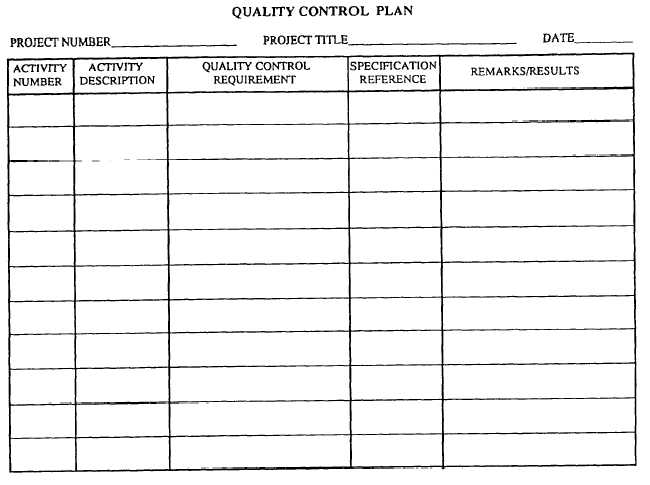
Figure 3-2.-QC plan.
identify the skills required and find alternate sources of training. The most common source of informal training is on-the-job training (OJT). Use OJT when you can identify at least one person who knows how to perform the task correctly (yourself, a crew member, a QC rep, or such) and schedule enough time to show the remaining crew the proper technique. Remember that one purpose of projects is to provide training for our people. Teaching your crew the proper methods and techniques should be high on your list of priorities. Besides the required training, required equipment must also be available to accomplish the task according to the method selected. Finishing a large concrete pad without the use of a power trowel (whirly-bird) might prove to be difficult. Renting one with project funds maybe an option if you do not have one at the deployment site.
Ensure Personnel Awareness
Another important step in the implementation of a QC plan is personnel awareness. To perform the work satisfactorily, each crew member must understand what the quality measures are. Before starting work on an activity, all crew members should be briefed about critical measurements, inspection items, potential problems, and each member's responsibility for quality. Remember, quality is everyone's responsibility. If you use the crew briefing checklist in figure 2-23 of chapter 2, all these items will be addressed.
Evaluate Completed Work
The last major step in QC plan development is the daily QC inspection report. This daily report is required for all projects. The purpose of this report is to document the completion of all required checks, tests, and inspections. All work completed or in progress either is or is not according to the specifications. The daily report is signed by both the QC inspector and the crew leader and forwarded to the operations officer or detail OIC with a copy to the ROICC office, the company commander, and the crew
Continue Reading